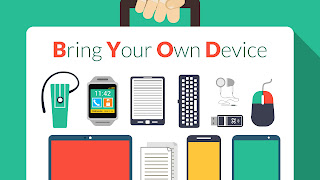Twitter Feed
Lynn DeCourcey Showcased in ExecutiveBiz
Kudos to my colleague Lynn DeCourcey for her recent interview on ExecutiveBiz.com! Lynn is NJVC vice president and general manager, cyber security. She oversees all aspects of the company’s cyber…
BISNOW Data Center Event Highlight’s Cloud
A big thank you to BISNOW and my fellow panel members for an outstanding discussion and very informative event, last week’s Data Center Investment Conference and Expo. The federal marketplace…
GSA Seeks Cloud Brokerage Information
GSA is using the RFI process to collect information about alternative models and/or solutions for future cloud acquisition vehicles and processes that further these goals. One emerging concept in cloud…
DoD Cloud Computing Strategy
The DoD recently released the department’s formal cloud computing strategy. DoD Cloud Computing Strategy View more documents from Kevin Jackson. In the forward, DoD CIO Teresa Takai said that: “The…
FedRAMP PMO Releases First Set of 3PAOs
Late today the FedRAMP Program Management Office released the first list of certified Third Party Assessment Organizations (3PAOs). These companies are accredited to perform initial and periodic assessment of cloud…
FedRAMP Releases Updated Security Assessment Plan Templates
Last week the GSA FedRAMP Program Office released the latest version of the cloud computing Security Assessment Plan (SAR) template. This document is the most recent step toward the Federal…
NJVC® and Gravitant® Announce New Strategic Alliance: Partnership to Benefit Federal Agencies with Powerful Provision and Management of Cloud Services that Unify Multiple Providers
Vienna, Va., April 4, 2012 — NJVC®, one of the largest information technology solutions providers supporting the U.S. Department of Defense, and Gravitant®, a provider of cloud brokerage and management…
NJVC® VP and GM, Cloud Services, Kevin L. Jackson to Speak on Cloud Security at 2012 Emerging Threats and Cyber Defense Symposium
Vienna, Va., March 15, 2012 — NJVC®, one of the largest information technology solutions (IT) providers supporting the U.S. Department of Defense, is pleased to announce that Kevin L. Jackson,…
NJVC’s Kevin L. Jackson Co-Authors INSA White Paper on Cloud Computing for the Intelligence Community
Findings Reflect Insight from More than 50 Cloud Thought Leaders VIENNA, Va.–(BUSINESS WIRE)–NJVC®, one of the largest information technology solutions (IT) providers supporting the U.S. Department of Defense, announces…
INSA Study on Cloud Computing in the Intelligence Community: Rollout 13 March 2012 | SYS-CON MEDIA
(Originally posted by Bob Gourley at CTOvision) Over the last year I’ve had the pleasure of serving with a team of volunteers from the Intelligence and National Security Alliance…
- Increased employee mobility (63%), satisfaction (56%) and productivity (55%) dominate as the top drivers of BYOD. These employee related drivers are considered more important than reduced costs (47%).
- Security (39%) and employee privacy (12%) are the biggest inhibitors of BYOD adoption.
- 20% of surveyed organizations have suffered a mobile security breach, primarily driven by malware and malicious WiFi.
- Security threats to BYOD impose heavy burdens on organizations’ IT resources (35%) and help desk workloads (27%).
- Despite increasing mobile security threats, data breaches and new regulations, only 30% of organizations are increasing security budgets for BYOD in the next 12 months and 37% have no plans to change their security budgets.
- 72% – Data leakage/loss
- 56% – Unauthorized access to company data and systems
- 54% – Downloading of unsafe apps or content
- 52% – Malware
- 50% – Lost or stolen devices
- 49% – Vulnerability exploitation
- 48% – Lack of control on endpoint security
- 39% – Infrequent software updates
- 38% – Compliance
1. Create your policy before procuring technology: To effectively use mobile device management (MDM) technology for employee owned devices Policy must precede technology. Also note that these policies will have broad corporate-wide implications for IT, HR, legal, and security.
- Mobile device management
- Application security assessments
- Application testing services
- Application source code security assessments; and
- Embedded device security.
This post was brought to you by IBM Global Technology Services. For more content like this, visit ITBizAdvisor.com.
( Thank you. If you enjoyed this article, get free updates by email or RSS – © Copyright Kevin L. Jackson 2017)
Cloud Computing
- CPUcoin Expands CPU/GPU Power Sharing with Cudo Ventures Enterprise Network Partnership
- CPUcoin Expands CPU/GPU Power Sharing with Cudo Ventures Enterprise Network Partnership
- Route1 Announces Q2 2019 Financial Results
- CPUcoin Expands CPU/GPU Power Sharing with Cudo Ventures Enterprise Network Partnership
- ChannelAdvisor to Present at the D.A. Davidson 18th Annual Technology Conference
Cybersecurity
- Route1 Announces Q2 2019 Financial Results
- FIRST US BANCSHARES, INC. DECLARES CASH DIVIDEND
- Business Continuity Management Planning Solution Market is Expected to Grow ~ US$ 1.6 Bn by the end of 2029 - PMR
- Atos delivers Quantum-Learning-as-a-Service to Xofia to enable artificial intelligence solutions
- New Ares IoT Botnet discovered on Android OS based Set-Top Boxes


